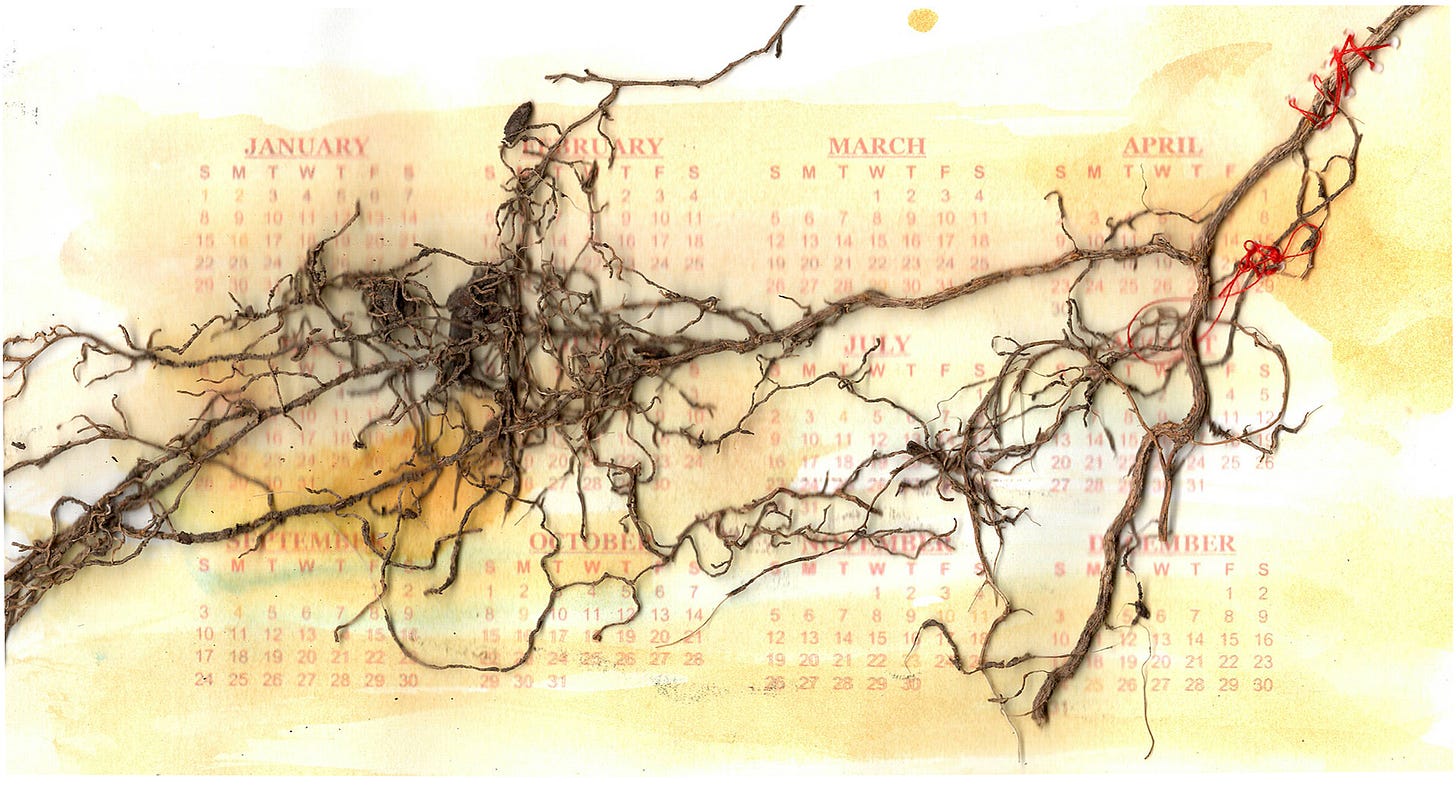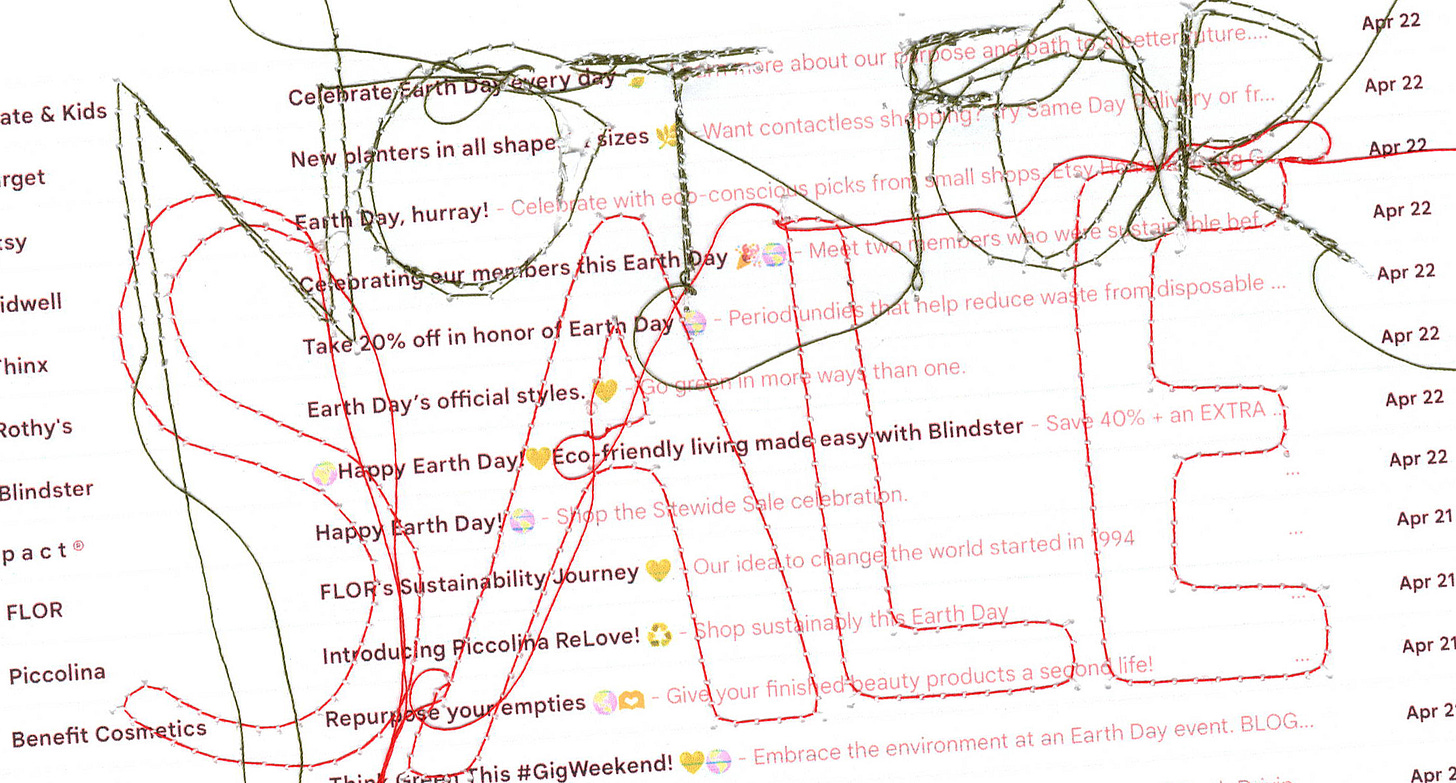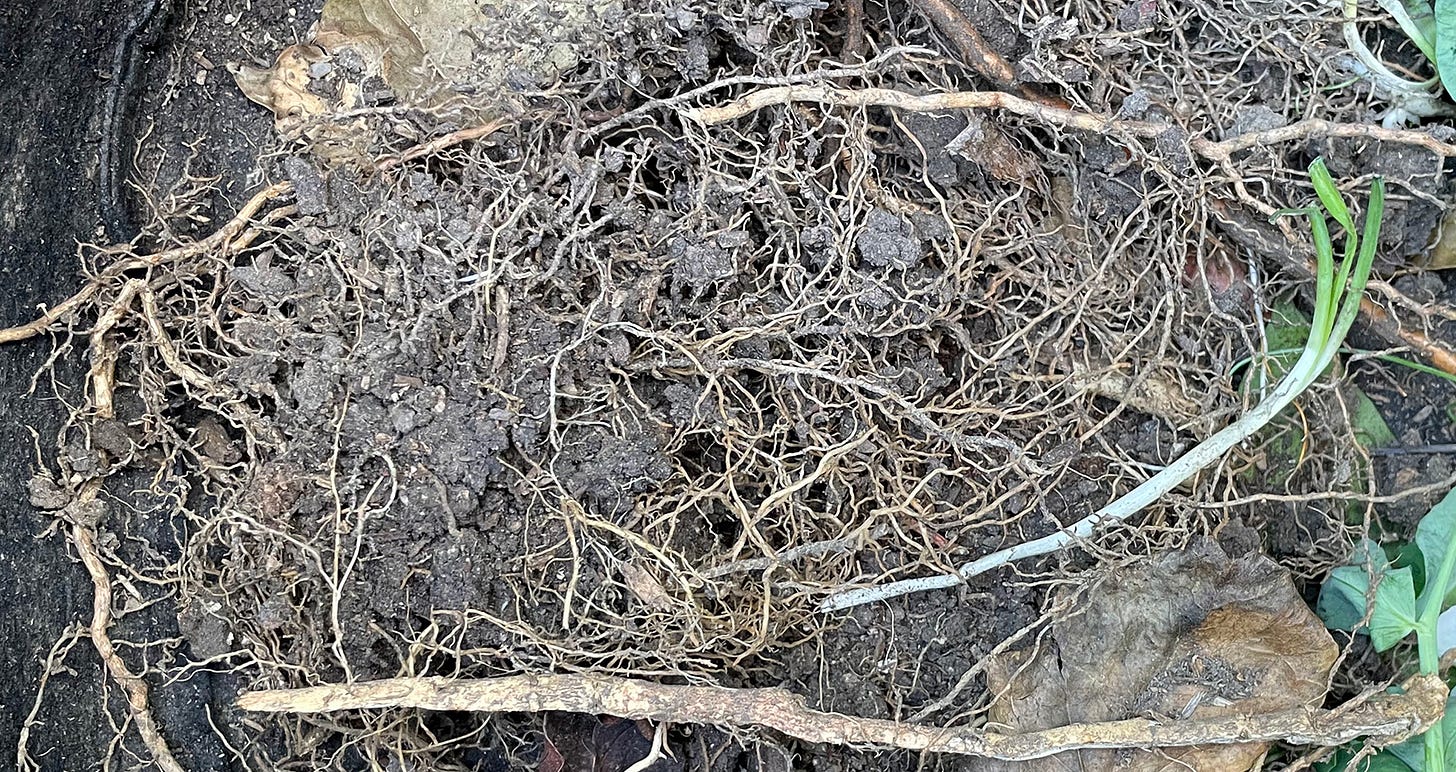If Earth Day is every day, go deep instead of shopping.
Digging up roots, to examine the shadows in our every day actions, beliefs, and values.
I am a design professor bridging the academics of environmental sustainability, the professional design community, and those who want to create change but don’t always know where to begin. We know the world around us is not sustainable, instead we need to find ways to design regeneratively - rejuvenating ourselves, our communities, and our planet.
Last weekend was Earth Day. I did not buy organic cotton underwear, earth’s favorite shoes, or recycled fashions. I did not make my home more eco-friendly by buying new blinds, celebrate with new furniture, or deals on plastic cups, or any of the other seemingly infinite ads for buying future landfill contents in the name of saving our planet. I also did not take a ride-share so they would plant a tree for me, or use a parking app to drive greener. While my Wisconsin roots take pride in the annual event that was started in my home state, like many things American, the monetization of Earth Day has turned it into a festival of capitalism and virtue signaling rather than one that creates impactful change.
I also did not attend a park clean up or neighborhood trash pick up. While perhaps better actions than shopping as they sometimes build community, they all too often become tokenized as something to do once a year. (And don’t forget to grab your “reusable” plastic bottle and T-shirt bound for Goodwill that says you were there on your way out!)
When we celebrate in these ways and sing out to celebrate “Earth Day every day!” we perpetuate the idea that these “solutions” will save us instead of tackling root causes that have the potential to create meaningful change.
Ironically, this is how I spent my Earth Day - pulling up roots. Not because I was celebrating, but simply because it was the first weekend without rain or travel or family events I had to work in my garden. Last fall I had planted cover crops, and now it was time to dig them out to plant new vegetables. Cover crops do the work that is perhaps at the heart of celebrating “Earth Day every day”. For the past 6 months or so, my cover crops nurtured the soil, prevented weeds, grew roots to keep the soil moving, and sprouted seeds and food for insects and birds. This work was done every day, but not with a click of a button. The work was slow, sometimes hidden below the earth, and sometimes blossoming in the sun. It is not a simple repeated action but one that is consistent, taking time to deepen, evolve and grow over time. As I cleared the crops, turned the soil, and dug the roots, I encountered earthworms and pill bugs who had been feeding from these plants and helping nourish my soil. Bees and butterflies swoop in and out reminding me of the intersectional and multi-species work the cover crops have done. These are all visual reminders that to celebrate “Earth Day every day” is to do the slow, deep, intersectional, systems work continuously every day.
Recently I wrote a chapter on systems thinking and intersectionality for an upcoming design anthology. One of the editors offered me feedback that they wanted more specific examples of actions designers take to address the climate crisis in their sector of industry. The comment frustrated me. I knew what they were asking for - a bullet-pointed list of things like making your die cuts so that they create less waste, choosing “better” materials, knowing your supply chain, using X material instead of Y, make your product more efficient. And yes, it’s true these things can make a difference, but what matters more is our underlying beliefs and dependency on the products that keep our capitalist lifestyles going.
All too often we fall back on the excuse of consumerism, instead of questioning its value, or our own values. If we can’t sell things, how will we make money? Isn’t shopping all the Earth Day sales helping the planet if they are eco-products? (No, see my last piece on the All Birds dilemma). We must question deeper than this about what we use our money for and why? Are our purchases our value? Many of us are holding on to beliefs about the world that no longer serve our connection to each other and the planet, our individual and collective worth, and how we make money, value money, or value success.
Sometimes the biggest thing you can do as a designer is to change who you are as a consumer and as a person in relation to our planet. And in that change, your design will change. But it’s much harder of course to change our deeply ingrained systems and beliefs than to change which dye we use in textiles or which ink we put in a printer.
It is difficult to question and change these beliefs in isolation. It’s near impossible to create an entire new system without also living in the current system. I’ll be the first to admit that while I value people, community, and our connection to the earth, Amazon packages make their way to my doorstep. But I’m also taking the time to do the work to examine the roots, to change the conversation where I can, when I can. When we as individuals hold on to outdated realities about the world we are more likely to unconsciously buy our way through the world, or live in fear of who rings our doorbells, or what we might learn in a book - these carry on into our larger communities and societal decisions. A cultural re-examination of our core values and beliefs is something that needs to happen individually, communally, and globally.
Earth Day was started not to celebrate with easy fixes, but with the premise that if people knew more about environmental impact on a deeper level, they would demand better protections.
Churning my soil and pulling the roots from the cover crops I’m reminded of our own personal work in life. My cover crops were there to serve a purpose, but now they no longer serve my garden, they need to be cleared and composted for new things to grow. Similarly, a good therapist knows that plucking the tops of your emotional weeds might help you feel better for a week or two, but unless you get to the root cause, your bad habits or feelings will just grow back. Digging up past traumas, old habits, and past versions of ourselves is not easy. It’s not something that can be done in a day, from Instagram posts or through a flash sale. It takes time, trust, and bravery to dig, uproot, untangle, and pull long-held beliefs that no longer serve us. But once we do, we are then truly ready to plant a new crop. Pulling up roots of cover crops is to examine our shadow.
It is here in our collective shadow we see the causes of climate destruction. Here in these shadows, we see that an impact greater than using a reusable coffee cup world is to examine climate migration because of coffee crops. In the shadows of our reusable water bottles are the predicted water wars, unsustainable water practices, and polluted toxins in drinking water. In the shadows of buying “sustainable fashion” we see the toxins of recycled textiles, and slave labor.
To do this work we must confront the uncomfortable and have larger conversations about race, class, gender, power, citizenship, labor, and ethics. Work that is slower, deeper, and more difficult than what we are typically sold as Earth Day solutions.
I can give you a list of action items designers can do to be “more sustainable”. I can point you to the solutions that aren’t nearly as hot and trendy but are actually making a difference. These are useful. But the work we must do as designers is the same work we all must do - re-examining the underlying structures, beliefs, and systems that make up our world. And from that new state of consciousness, design how we value our time, our resources, and our relationships. That is the work of a designer who makes Earth Day every day.
If you bought new clothes because of Earth Day sales - good for you. Wear them well, mend them when they rip, and if you didn’t this time, next time choose to buy from a brand that empowers its workers, exposes its supply chain, and creates responsibility. If you went to a neighborhood clean-up - great! This week, reach out to the neighbors you met to organize another one next month to build community. Regardless of what you did or didn’t do on Earth Day, it’s never too late to pick up your shovel and dig into our roots.






